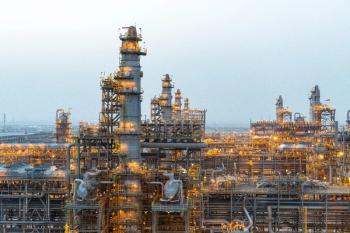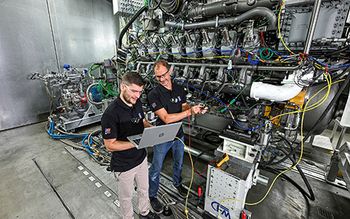
Mitsubishi Orlando Service Center Readies for Integration with Hitachi
Mitsubishi’s Orlando Service Center serves as a turbine repair and blade manufacturing site[/caption]
The news pages of our March/April issue contained
On the Mitsubishi side of the ledger, Mitsubishi Hitachi Power Systems Americas (MHPSA) is contributing a variety of facilities including its Mitsubishi Power Systems Americas corporate offices in Lake Mary, FL, its G-class turbine manufacturing facility in Savannah, GA and the Orlando Service Center.
The Orlando base came about as a result of Siemens acquisition of Westinghouse. Prior to that, Mitsubishi’s reach into the Americas was mainly through its Westinghouse relationship. The company established its service shop in Orlando in 2002 as a repair shop. But it has since been expanded to incorporate blade manufacturing and remote monitoring.
The tour began in the remote monitoring room. Some 50 screens took up a large wall, showing turbomachinery being monitored by around 10 technicians. Most OEMs contain their monitoring efforts mainly to dealing with alarms, i.e., they log in when they receive an alarm and take a look at what is happening. Here, however, the company is continually keeping track of and trending at least 1,000 parameters per turbine (up to 7,000 in newer models).
“We are connected 24/7 and can see warnings of a potential issue before an alarm level is reached,” said Carlos Koeneke, Technical Director, at MHPSA. “We don’t have active control of the turbine or plant, only passive monitoring which is used to assist plant personnel in a purely advisory capacity.”
In the blade repair shop, blades and vanes are brought in, their thermal barrier coating (TBC) is stripped, and they are subjected to various inspection techniques before a determination is made whether to repair or scrap. The scrap percentage is below 10%.
Once repaired, blades are reinspected to verify cooling hole effectiveness and overall blade integrity. TBCs are then reapplied. The company has a series of automated machines which apply the largely ceramic compounds at flame temperatures of up to 16,000°C.
Next up was the manufacturing plant for row 1 and 2 turbine blades. Blade castings arrive from Japan to be precisely machined and moved along the assembly line. As with the blade repair shop, a large stock is maintained in house.
As the dust has hardly settled on the JV, little or no impact has been felt on the Orlando Service Center so far. “We don’t anticipate significant shifts in our operations going forward,” said Koeneke.
What is clear from the tour and from briefings given by MHPSA staff is that the company has been steadily increasing its footprint and influence in the Americas. The addition of Hitachi turbines and other assets provide the company with a broader portfolio with which to address the market. Bottom line: expect more competition within the Americas, both in the high end for large combined cycle power plant bids, as well as the small turbine end where Hitachi provides equipment ranging from 15 MW up to 80 MW — an area of the market that Mitsubishi traditionally did not serve.
Newsletter
Power your knowledge with the latest in turbine technology, engineering advances, and energy solutions—subscribe to Turbomachinery International today.





